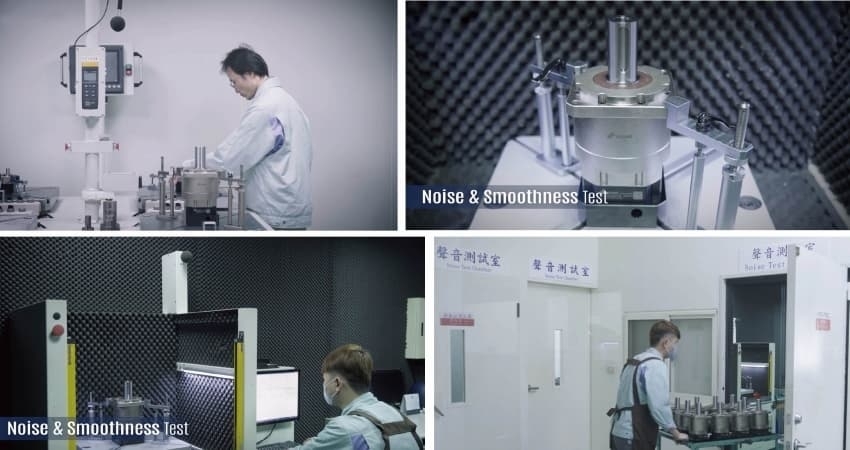- HOME
- Blog
- In-depth Learning
- How to Avoid The Running Noise of Gearboxes?
How to Avoid The Running Noise of Gearboxes?

The rise of Industry 4.0 is helping factories and manufacturers by improving producing efficiency, accelerating the transform to automation and intelligence, meantime increasing the need for robotics. There are also more demand for drive parts such as motors and gearboxes from electric vehicles, industrial robotic arms, medical equipment, arms industry, green energy and other industries. Taking electric vehicle as an example, motors that operate nearly silently replace the internal combustion engine, and the gear meshing sound in the power train becomes the main source of noise. In order to reduce the noise of gears at high speed, the precision levels of gear machining must be greatly improved. Gearboxes and speed reducers are key components of the mechanical transmission system, high-grade gears and low operating noise are necessary requirement and performance.
What causes gearbox to make noise?
The noise of a gearbox or a speed reducer is due to friction, vibration, collision of gears, especially when it is running at the high load and high speed. Moreover, if required precision is not achieved or the backlash is too large when designing, manufacturing and assembling gears, the noise and vibration will be produced during operation. The causes of noise after long time operation may be gear surface wear, bearing damage or insufficient lubricant.How to avoid or reduce the noise?
The factors that cause the noise or vibration of the gearbox may come from design, manufacturing, assembly or other components. But it is undeniable that gears are the main source of running noise. Reducing the operating noise to maintain normal operation and ensuring the reliability is one of the prerequisites for the quality of the gearbox. The following points should be considered in the design, manufacture and assembly of gear systems.- Choose gears with good precision
Reduce pitch error and improve the accuracy to reduce noise. - Use smooth surface-finished gears
Gear grinding improves accuracy and smoothness of tooth surface, or proper run-in operation is also effective on reducing noise. - Correct tooth surface contact
Proper tooth profile trimming or modification to avoid tooth surface impact. - Proper backlash
The greater the distance, the louder the impact when the gears mesh. Smaller backlash will help in reducing noise. - Higher contact rate
Higher contact rate and larger overlap ratio will reduce noise during operation. Therefore a helical gear with higher contact ratio is quieter than spur gear. - Higher rigidity
Increasing the rigidity of gears, housing (ring gear) and shafts will help in reducing noise. - Use material with high vibration damping rate
Cast iron gears are more effective in reducing noise than steel gears. - Proper lubrication
Sufficient lubricant is important to a gearbox. Lubricant with high viscosity tend to be less noisy. - Lower speed and lower load
Low speed and load produce lower noise.
